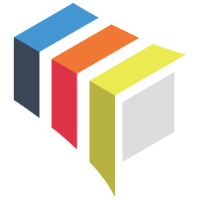QUESTIONS? CALL:
+1 (833) BOODSKAp
IoT in Healthcare: Elevating Patient Care with Boodskap’s IoT Platform | Ethan Turner
IoT in Healthcare: Elevating Patient Care with Boodskap’s IoT Platform
- The healthcare industry is witnessing a remarkable transformation with the advent of Internet of Things (IoT) technologies. IoT in healthcare, often referred to as the Internet of Medical Things (IoMT), leverages connected devices and real-time data to enhance patient care, streamline operations, and improve overall healthcare outcomes. Boodskap’s IoT platform is at the forefront of this revolution, providing innovative solutions for remote patient monitoring, chronic disease management, and more. This blog explores the key benefits, use cases, and future trends of IoT in healthcare with Boodskap.
- IoT devices enable continuous monitoring of patients’ vital signs such as heart rate, blood pressure, glucose levels, and more. Real-time data transmission allows healthcare providers to detect anomalies early and intervene promptly.
- Example:Continuous glucose monitors (CGMs) transmit real-time blood sugar levels to healthcare providers, facilitating timely interventions and personalized treatment adjustments.
- IoT devices play a crucial role in managing chronic diseases like diabetes, hypertension, and heart disease. Continuous monitoring and real-time data help in timely interventions and personalized care plans.
- Example: Continuous glucose monitors for diabetics provide real-time blood sugar readings, helping patients and doctors make informed decisions about insulin dosing and lifestyle changes.
- Post-surgery remote monitoring enables patients to be closely observed after discharge, reducing hospital stays and readmission rates. Wearable patches that track vital signs and wound healing progress allow healthcare providers to detect complications early.
- Example: Remote monitoring has shown significant reductions in hospital readmissions for certain conditions, leading to improved patient outcomes and reduced healthcare costs.
- Smart pill dispensers and IoT-enabled medication reminders ensure patients take their medications correctly and on time. These devices send alerts to patients and caregivers when doses are missed, improving treatment efficacy.
- Example: IoT-based medication reminders can improve adherence rates by up to 30%, potentially leading to better health outcomes and reduced complications from chronic conditions.
- Devices like smartwatches, wearable health monitors, and mobile health apps collect and transmit patient data to healthcare providers, enabling remote monitoring and timely interventions.
- Benefits: Reduces hospital visits, improves patient care, and allows for continuous health monitoring.
- IoT facilitates telemedicine by integrating cameras, microphones, and diagnostic devices for remote consultations. Patients can receive medical care from the comfort of their homes, improving accessibility and convenience.
- Benefits: Increases access to healthcare, reduces travel time, and enhances patient convenience.
- Fitness trackers and wellness apps collect data on physical activity, heart rate, sleep patterns, and overall fitness metrics, helping individuals and healthcare providers track and improve health outcomes.
- Benefits: Encourages healthy lifestyles, detects early signs of health issues, and personalizes fitness plans.
- IoT devices like fall detection sensors, heart rate monitors, and wearable health devices ensure the safety and well-being of elderly individuals, providing timely alerts and interventions.
- Benefits: Reduces the risk of accidents, ensures timely medical attention, and enhances the quality of life for the elderly.
- RFID tags, GPS trackers, and proximity sensors help healthcare facilities track the location and usage of medical equipment and supplies, ensuring optimal asset utilization and reduced losses.
- Benefits: Improves asset utilization, reduces loss and theft, and enhances operational efficiency.
- AI-Integrated IoT Systems: Combining AI with IoT will enable more advanced data analytics, predictive insights, and automated decision-making, further enhancing patient care and operational efficiency.
- Adoption of 5G Technology: The rollout of 5G networks will provide faster and more reliable connectivity for IoT devices, enabling real-time data transmission and more efficient remote monitoring services.
- Enhanced Data Security: As the amount of health data collected by IoT devices increases, ensuring data security and privacy will become even more critical. Future IoT systems will incorporate advanced encryption and security protocols to protect patient data.
- Expansion of Telehealth Services: IoT will play a significant role in expanding telehealth services, providing more comprehensive remote care options and improving accessibility for patients in remote or underserved areas.
- Boodskap’s IoT platform is driving the future of healthcare by providing real-time data, improving patient monitoring, enhancing treatment outcomes, and reducing operational costs. As IoT technologies continue to evolve, they will play an increasingly vital role in delivering efficient, effective, and personalized healthcare services. Embracing IoT in healthcare is essential for providers aiming to improve patient care, streamline operations, and stay ahead in the rapidly changing healthcare landscape. For more information on how Boodskap’s IoT platform can revolutionize your healthcare services, contact us today.

